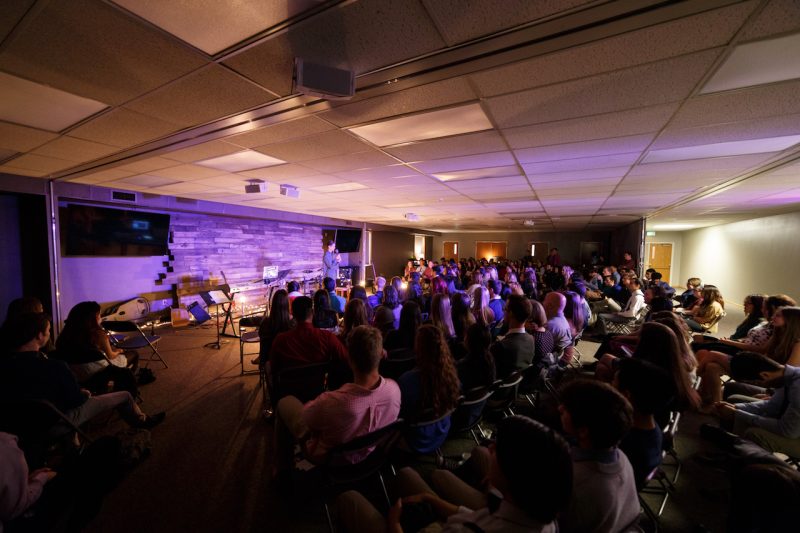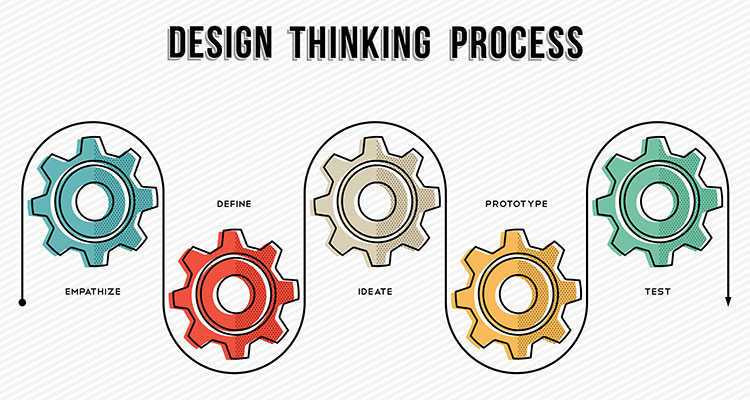Prioritizing A/V/L Purchases in Churches
By Anthony Coppedge
Logically speaking, the prioritization of audio, video and lighting technologies in churches would be 1) audio; 2) lighting; 3) video. Interestingly, this is not always the case, and as integrators and manufacturers, it’s helpful to understand how churches prioritize technology (and why).
Budgets and Priorities
Considering the fact that nearly 95 percent of the roughly 330,000 Protestant churches in the United States have an attendance just shy of 90 people per week, it’s easy to see why, historically, churches have been seen as a vertical market with very limited budgets.
But that also means more than 16,000 churches are not in the category of ‘very small.’ More than 10 percent of those churches have weekly attendances exceeding 2,000 people (classified as a “mega church”). Meanwhile, the number of multi-site campuses also continues to increase for mega churches, with nearly 60 percent of them currently with at least two campuses and 100 percent of these large churches planning for multi-site. Often with multi-million dollar annual budgets, the limitation of funds is less of a barrier than it is for very small churches.
In other words, even if only 2,000 of the 330,000 churches in the U.S. are mega churches, once multiple campuses per church are counted into the mix, the percentage of larger campuses increases dramatically. Even more compelling, the fastest-growing churches are dominated with sub-1,000 attendance churches seeing double- and triple-digit percentage growth year over year, showing that starting small doesn’t have to mean staying small.
During a 2005 scientific study I was a part of developing with research firm TFCInfo, I found some interesting facts about how churches prioritize budgets for A/V/L technology. For instance, churches with less than 100 attendees averaged between $7,000 and $10,000 for all A/V/L budget on a new facility. In the same study, a new 2,000-seat venue had an average of $2.4 million in A/V/L technology with $186,667 spent on projection alone. And that’s just for the main auditorium, not youth facilities, gymnasiums, large meeting rooms or classrooms.
Sure, budget will always matter (as it does for every market segment). However, an interesting trend is how the new crop of young pastors is leveraging technology earlier and more often in their facilities. These 20-something to 30-something pastors grew up with technology as a part of their childhoods and are culturally attuned to leveraging technology as a natural part of their church dynamic. An interesting rise is in the hiring of a part- or full-time creative arts or technical arts pastors within the first 10 staff hires! The emphasis on technology has shifted from “we need to catch up with the rest of society” to “we need to be in sync with the rest of society.”
Audio Not #1
In most churches, spoken word and singing are the obvious priority. As such, you’d think that the majority of the budget would be allocated to audio. But one need only visit a few churches to come to the rather obvious conclusion that this is clearly an area where not enough budget is typically spent. Of course I’m including room acoustics into the mix here, though it’s much more of a passive technology than electronics. Still, it seems churches have been slow to make upgrades and/or repairs to their existing audio systems. By and large, volunteer-proofing the audio system is not done nearly often enough. Upgrading to digital consoles with presets and recalls goes a long way towards improving the sound/mixing issues in many, many churches (hint, hint, nudge, nudge, you systems integrators).
It turns out that new technology budgets land anywhere from 5 percent all the way up to 15 percent (or more in certain instances) of a new building budget. So, for instance, a $10 million building campaign would have anywhere from $500,000 to $1.5 million in A/V/L technology budgeted.
Interestingly, audio repeatedly came in second place when it came to the share of that budget, falling behind video. There are two possible reasons for this trend: 1) Video tends to be more expensive, item per item, in a church installation than Audio; or 2) audio equipment manufacturers and integrators are leaving money on the table.
Areas where churches have a need for audio upgrades and new technology include:
- Digital audio consoles (Front of House, Monitors and Audio-for-Video).
- In-ear monitors
- Personal monitor mixing devices
- VHF to UHF conversion on wireless devices
- Signal processing devices
- Effects processing devices
- Updated/Replaced amp & speaker systems
- Room acoustical treatment
We’re #1!
Video continually tops the percentage of budget for new church building programs. I think part of this is due to the ubiquity of video in our culture and the desire of church leaders to be “up-to-date” with the current video technology that is pervasive in our daily lives. It is also helpful that many growing churches have launched multiple venues on one campus and/or are adding satellite campuses, which are heavily video-dependent upon the main campus video stream or feed.
It is not uncommon for half of the A/V/L budget to be allocated to video. Even in retrofits and upgrades, video rises to the top spot, often with 16:9 displays replacing old 4:3 devices. In fact, I wrote a widely published article back in 2002 that predicted high 16:9 (or wider) display adoption for all churches, even when a church had no plans or need for HD video. The reason? Song lyrics. Widescreen allows for song verses and choruses to be typed more like they are sung, without forced carriage-returns due to a lack of screen width. The result is that those new to singing along with a song will be able to follow the lyrics easier when they’re “typed like they’re sung.”
Even in smaller venues, video is playing a prominent role. Projection is still leading the way with the cost-per-lumen ratio making ‘bright’ finally affordable. Even today, though, other video technologies are finding their way into churches. LED signage is being trumped by LED video walls and cubes. Just today, I was at a mega church that added three temporary LED video walls since the stage has been transformed into a set for a large Christmas production, covering the existing rear projection setup. A rental today, but probably the trend as the price point continues to drop as these once stratospherically-priced devices become more affordable. Currently, I only know of one church with permanent LED video walls (Willow Creek Church up near Chicago), but with more and more lighting being added for the increased use of live video, projected brightness and high contrast are becoming premium needs for larger churches.
Areas where churches have a need for video upgrades and new technology include:
- Projection
- Digital signage
- Confidence monitors (stage)
- Video capture (web)
- Live video streaming (web or multi-site)
- Multi-camera recording (Image Magnification, Multi-site, Web & Broadcast)
- Post-production
- Multi-site video syncing for multi-screen systems
The Third Wheel Bling
Lighting has been seen as a necessity for basic visual help, but with more and more churches adopting the Performing Arts Center functionality for their facilities, flat-white stage and architectural lighting is no longer the norm.
For over two decades, I watched as the largest churches began adding moving light fixtures for productions and special events. The trend shifted from rental to purchase as the technology become more reliable. Moving head fixtures made room for yoke instruments and the concert-style lighting movement began in earnest in churches about 10 years ago. Fast forward and you’ll find a wide mix of conventional, architectural, theatrical and performance lighting being added early and often to progressive churches.
Even the old-school broadcast churches, fixated for the longest time on a to-the-footcandle even white lighting format, began adding splashes of color and texture. Today, we’re seeing environmental projection, augmented greatly by color-mixing lighting instruments as the latest trend in church scenic design.
Perhaps it is because it’s simple to add a few fixtures at a time that we’ve seen this area grow the slowest in terms of church A/V/L tech budgets, but the same rent-before-buying mindset that helped video achieve critical mass will also be a strong path for adding non-conventional lighting into the mix.
An interesting trend seen with LEED certified church buildings is the increased use of LED architectural fixtures for the energy savings they provide. But the bonus is a whole new level of color-mixing that goes well beyond the platform is being utilized to help set the tone and mood of a room to match the tenor and style of music. And with more live video being added into churches, the lighting to create great video is not far behind. It reminds me of the old Lighting Director joke: “Without light, TV is just radio!”
Areas where churches have a need for lighting upgrades and new technology include:
- Architectural LED lighting
- Moving head/yoke lighting fixtures
- LED color wash (walls, stage backdrop, etc.)
- Video lighting (and color-matching different fixtures for the cameras)
- Environmental projection augmentation
- More efficient fixtures and dimming
- Upgraded lighting controls, especially with moving head fixtures
- Upgrades to save overall power usage (cost savings overall)
The house of worship market is a unique vertical with plenty of opportunity for all three technologies to have a larger seat at the table. The A/V/L industry needs to realize the potential and leverage these trends to maximize their market impact while the trend is still hot.
A former staff member at three mega churches and church technology consultant, Anthony Coppedge has developed a respected reputation as a leader in technical and communications circles within the church marketplace. Reach him atanthony@anthonycoppedge.com or on Twitter athttp://www.twitter.com/anthonycoppedge






